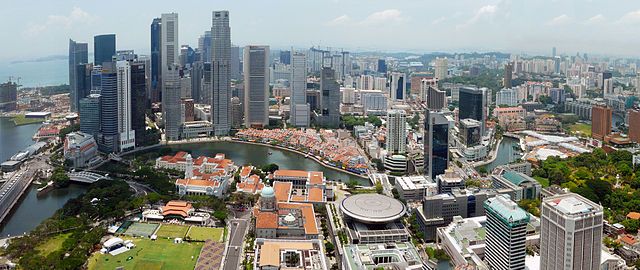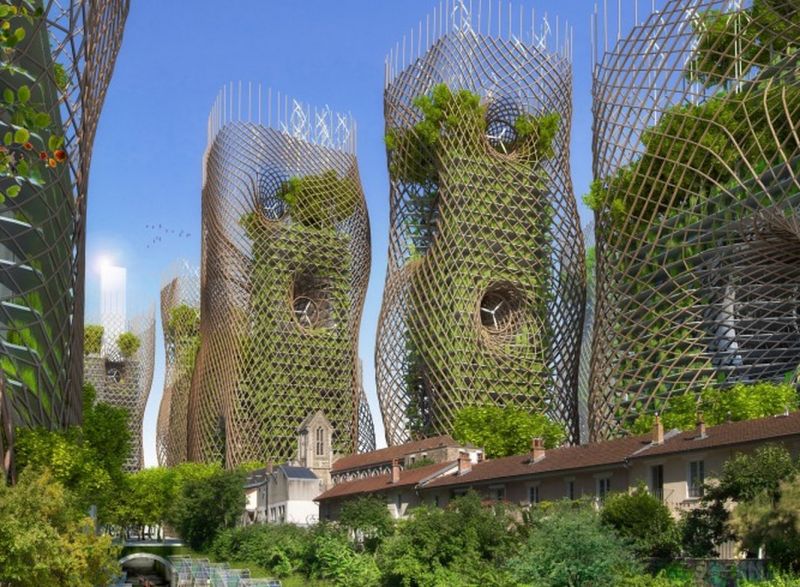Sustainability: Building Cities to Last
Published on by Dusko Balenovic, Previous Network Manager at The Water Network in Government
Sustainable cities are about more than cutting carbon emissions – they involve thinking about how people live, travel and interact with the natural world.

Freiburg, in southwest Germany, was flattened by bombing during the Second World War. Yet the destruction gave city planners the opportunity to think about how to rebuild it from scratch and, in the process, they created one of the most innovative and successful sustainable cities in the world.
A commitment to renewable energy has seen solar panels installed on public buildings and private homes, and energy derived from wind and biomass sources. In two residential districts, Rieselfeld and Vauban, there are groundbreaking “passive” houses that use almost no energy.
Freiburg also has a forward-thinking transport strategy that started with the restoration, in 1969, of the old tram network. Wulf Daseking, Freiburg’s former director of city planning and now a professor at the University of Freiburg, says the tramlines are the city’s backbone: 74% of residents live within 250m of one. As chief planner, Daseking insisted that there should be no big shopping malls because “they kill the smaller shops within your area where you can buy your daily requirements within walking distance”. The city’s pedestrianised centre is thriving.
In October, in Ecuador, the United Nations will hold its third Habitat summit to discuss a global strategy for sustainable urban development. Could other cities emulate Freiburg’s success? And what can we learn from those that have already trodden the sustainable path?
Sustainable development, according to the 1987 definition developed by the UN’s 1987 Brundtland report into sustainability, “meets the needs of the present without compromising the ability of future generations to meet their own needs”. That, however, requires navigating what Tim Dixon, professor in sustainable futures in the built environment at the University of Reading, refers to as the “disconnection between short-term planning horizons of five to 10 years and longer-term environmental change”.
 There is more to sustainable development than reducing carbon emissions: it also takes in economic and social sustainability.
There is more to sustainable development than reducing carbon emissions: it also takes in economic and social sustainability.
As Hugh Ellis, interim chief executive of the Town and Country Planning Association, says: “It requires you to think about the built environment and human beings holistically and not simply from an engineering point of view or a technical and spatial planning point of view.”
The greatest efforts have been made at city rather than national level. Certain factors are key to success. Change is often driven by a committed local leader, such as mayor Jaime Lerner in Curitiba, Brazil, one of the most highly praised exemplars of sustainability. Freiburg’s achievements were made easier by Germany’s devolved federal structure, allowing it greater independence in decision making.
Ellis believes that strong regulation is another enabler of sustainable planning. The UK lags behind other European countries, he argues, because the deregulation of the built environment has removed power from city councils, making it possible, for example, to convert offices into homes without planning permission.
Even with local autonomy and strong leadership, sustainable urban planning faces multiple challenges, such as an ageing, energy-inefficient infrastructure, a road system designed to favour car users and a lack of green public spaces. It’s true that there are some easy wins. Cities such as Copenhagen and Barcelona have adopted “smart” technology so, for example, street lighting can be turned off or dimmed automatically, or data from road sensors can be used to guide traffic in the most efficient route around a city.
However, these technologies only scratch the surface. Genuine long-term change usually requires heavy initial investment. As cities like Freiburg have found, partnerships are key to success. Ivana Gazibar, head of futures at UK sustainable development organisation Forum for the Future, says: “Getting investment and buy-in for a citywide green roof scheme is challenging because it’s not necessarily going to deliver a straightforward financial return to a bonded network of people or a single organisation. So you’ve got to build a value network of the different organisations that are going to benefit then get them to work together to fund it, to design it and to implement it.” That partnership could include energy companies, environment agencies, healthcare organisations and food suppliers.
Tackling dependence on cars can be a long, hard slog. Nearly 30 years ago, a plan was mooted in Barcelona to create “superblocks”: mini neighbourhoods where cars would be allowed only if they belonged to residents or were supplying local
businesses. This was rejected because, says Salvador Ruede, director of Barcelona’s urban ecology agency, car culture was “deeply rooted”, and planning decisions all favoured cars.
 Now Ruede is finally putting the plan into action, with the aim of reducing car use in the city by 21% over two years and increasing the use of public transport – no one will live more than 300m from a bus stop or wait more than five minutes for a bus. Ruede wants cars and motorcycles to be used in only 10% of journeys in the city.
Now Ruede is finally putting the plan into action, with the aim of reducing car use in the city by 21% over two years and increasing the use of public transport – no one will live more than 300m from a bus stop or wait more than five minutes for a bus. Ruede wants cars and motorcycles to be used in only 10% of journeys in the city.
A lack of money, citizen reluctance, historic planning mistakes: these are not problems when a government decides to build a sustainable city from scratch. The United Arab Emirates has created two: the $18bn Masdar City project, attacked by some as being more show than substance; and Dubai Sustainable City. The latter, which is nearing completion, is designed to use zero energy net, and will include horse and bicycle tracks, produce its own organic food, use solar power, recycle waste water and have several public parks.
Baharash Bagherian, the architect who led the design for phase 2 of the project, believes in the importance of “biophilic design”, which he describes as the “process of incorporating nature into a building’s architecture, with the objective of making people feel healthier and happier”. Like everyone involved in sustainable planning, he believes that bringing nature into the city is good for wellbeing and social harmony. It’s too soon to say whether the UAE examples will succeed in attracting residents or act as a model for other planners.
The Habitat III summit will provide opportunities to hear stories of visionary planners from all over the world creating sustainable cities. They remain isolated cases, however, and wide adoption of sustainable ideals requires governments to put the right structures in place. Ruede believes a “profound cultural change” is needed to make sustainability work, adding: “We may know how to deal technologically with many problems related to sustainability. But what is certain is that, in most cases, we don’t have the right organisation to tackle them.”
Source: Public Finance International
Media
Taxonomy
- Integrated Infrastructure
- Green Buildings
- Sustainability
- Sustainability
- Eco-City Development
- Green Economics
- City
- Environmental
- Green Technology